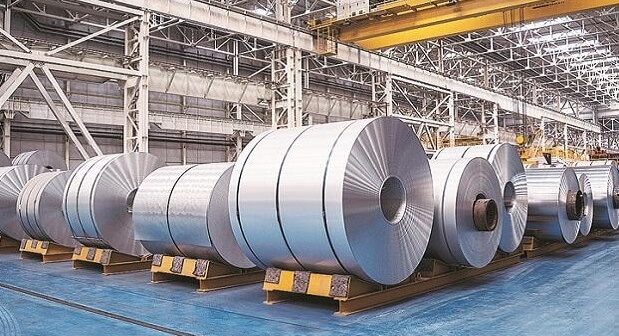India’s economic trajectory from 1947 to 2014 was largely shaped by the policies of successive Congress governments. Rooted in a mix of socialism, protectionism, and state-led industrialization, these policies often prioritized short-term political gains over long-term economic growth. This analysis examines how these policies contributed to significant economic setbacks.
1. Nationalization and Financial Sector Inefficiencies
The nationalization of banks in 1969 and other industries aimed to expand credit access and control critical sectors. However, these policies led to widespread inefficiencies. The banking sector, shielded from market competition, became overburdened with non-performing assets (NPAs) due to politically motivated lending. Public sector banks, without the pressure to innovate, grew complacent, resulting in poor risk management and inefficiencies. This left the sector ill-prepared to support India’s growing economy in the 21st century.
The nationalization of coal mines in 1973 is another example. While intended to ensure energy security, it led to inefficiencies and corruption. The state-owned Coal India Ltd. struggled with poor management, unable to meet the country’s growing energy demands. Consequently, India had to rely heavily on coal imports, further straining the economy.
2. License Raj and Industrial Stagnation
The “License Raj,” referring to the elaborate system of licenses and regulations required to operate businesses, stifled entrepreneurial spirit and innovation. Introduced as part of Nehru’s vision for a state-led economy, these regulations aimed to control the economy and prevent monopolies but led to rampant corruption. Businesses were forced to navigate a bureaucratic maze, often resorting to bribery to expedite processes.
The automobile industry is a telling example. Maruti Udyog Ltd., a government initiative, dominated the market with minimal competition. The lack of competition meant that innovation and quality improvement were not priorities, a situation that persisted until the economic liberalization in 1991, which allowed foreign players into the market and drastically improved product quality and customer choice.
3. Protectionism and its Long-Term Costs
India’s protectionist policies, characterized by high tariffs and import restrictions, were intended to foster domestic industries. However, these measures often had the opposite effect, leading to the development of inefficient and uncompetitive industries. The Indian electronics industry, protected from foreign competition, lagged significantly behind global counterparts. While countries like South Korea and Taiwan became electronics powerhouses, India’s industry stagnated, unable to compete globally due to outdated technology and practices.
The textile industry also suffered under protectionism. Despite being a major producer of raw cotton, the Indian finished textile industry was hampered by outdated technology and a lack of innovation. Export restrictions and high tariffs on imported machinery meant that Indian textiles could not compete globally, leading to a loss of market share to countries like China and Bangladesh.
4. Socialist Policies and Agricultural Challenges
The Congress governments’ socialist policies extended to agriculture, where land reforms and subsidies were intended to empower small farmers. However, these policies often had adverse effects. The redistribution of land, though theoretically beneficial, was poorly implemented, leading to the fragmentation of land holdings and reduced agricultural productivity.
Moreover, the excessive reliance on subsidies for fertilizers, water, and electricity led to overuse and environmental degradation. The Green Revolution of the 1960s, while successful in increasing food production, also had long-term environmental costs. The overuse of chemical fertilizers and groundwater depletion has left vast tracts of farmland infertile, a problem that persists today.
5. Missed Opportunities in Technology and Infrastructure
India’s initial reluctance to embrace information technology and modern infrastructure further set the country back. While other nations were rapidly digitizing, India’s rigid regulatory environment and hesitation to allow private participation in key sectors delayed the adoption of new technologies. It wasn’t until the 1980s, under Prime Minister Rajiv Gandhi, that India began to seriously invest in information technology, but by then, the country had already fallen behind global leaders.
Infrastructure development, particularly in the power sector, was another area where India lagged. State monopolies in electricity generation and distribution were often inefficient and corrupt, leading to widespread power shortages. These shortages hampered industrial growth and discouraged foreign investment.
6. Economic Reforms and the Legacy of Inefficiency
The economic reforms of 1991 marked a significant shift in policy, moving away from state-led socialism toward a more market-oriented approach. These reforms were necessitated by a severe balance of payments crisis, highlighting the unsustainable nature of the economic policies pursued for decades. However, the reforms, while successful in spurring growth, were not enough to fully overcome the legacy of inefficiency and corruption that had been built up over the years.
Public sector enterprises remained bloated and inefficient, and the banking sector continued to struggle with NPAs. The industrial sector, while more competitive, had to overcome decades of technological lag and infrastructural deficits. The reforms also exposed deep-rooted issues in agriculture and labor markets, which had been neglected under previous policies.
Conclusion
The policies pursued by Congress governments from 1947 to 2014, while well-intentioned in many cases, often led to unintended economic consequences that hindered India’s growth. Nationalization, protectionism, and the License Raj created an environment of inefficiency, corruption, and stagnation that took decades to overcome. While the economic reforms of 1991 marked a turning point, the legacy of these policies continued to weigh heavily on the Indian economy. As India moved forward after 2014, the focus shifted towards liberalization, technological adoption, and infrastructural development, highlighting the importance of learning from the mistakes of the past.





